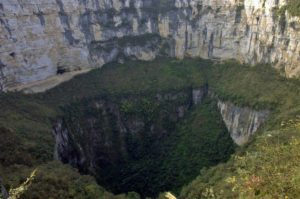World 🢖 South America 🢖 Venezuela
Sinkholes 🢔 Caves 🢔 Geological wonders 🢔 Categories of wonders
Wonder
Sima Aonda
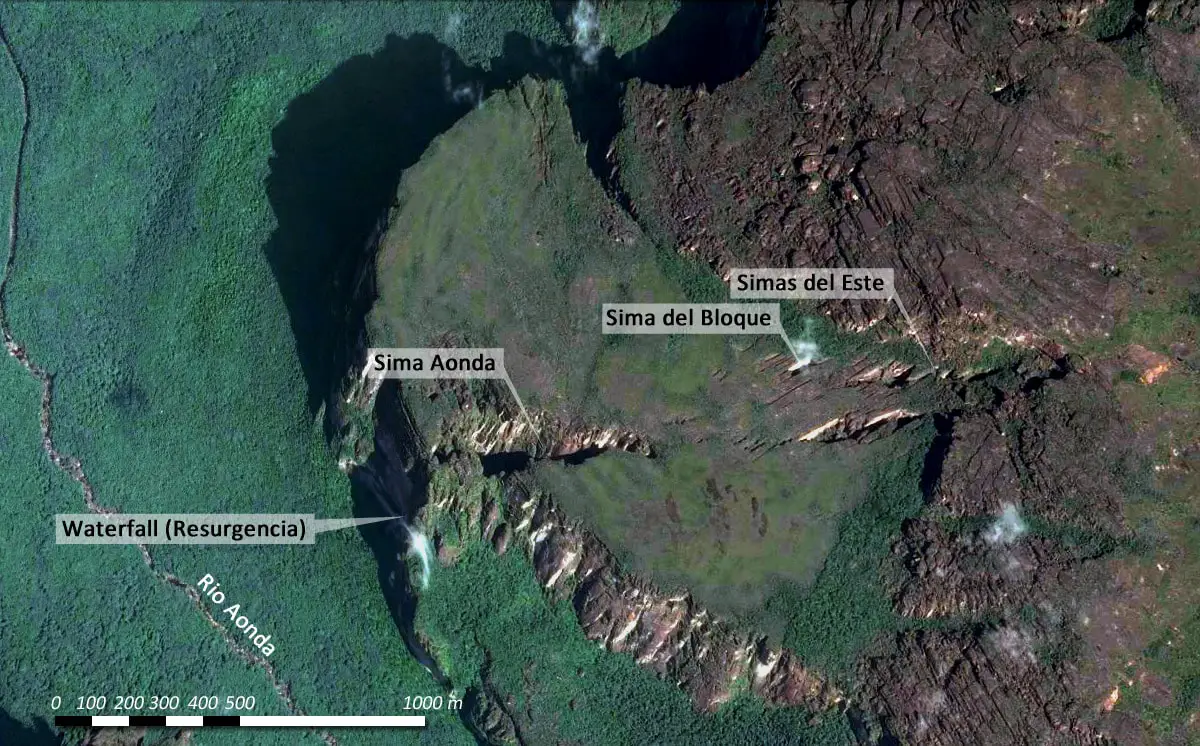
 In short
In short
As if having the world’s tallest waterfall (see Angel Falls) is not enough, the spectacular Ayan Tepui has many more wonders of nature. Sima Aonda is one of them – a 383 m deep hole near the rim of the giant wall, with a cave stream flowing through it. This is the deepest sinkhole in Venezuela.
 46.3%
46.3%
GPS coordinates
Location, address
Depth
UNESCO World Heritage status
Map of the site
If you see this after your page is loaded completely, leafletJS files are missing.
 In detail
In detail
Aonda Plateau
Rio Aonda – a tributary of Rio Carrao – in its upper reaches flows through a spectacular canyon with some 500 m tall, vertical walls on both sides. According to local legends, this is not a good place as here lives the terrible Canaima – a kind of Death, which always is chasing people and sooner or later finds and kills each of them. There are numerous smaller waterfalls but one attracts attention – on the right side from the lower part of the wall, through a cave opening gushes some 100 m tall waterfall which forms a smaller tributary to Rio Aonda.
This waterfall flows from a cave that goes under an amazing corner of the enormous Auyán Tepui – Aonda Plateau. It is a smaller rock platform that forms a kind of "stepping stone" (1100 – 1150 m above sea level) between the lowlands of Carrao river valley (450 – 500 m asl) and the exotic mountain plateau of Auyan Tepuy (1300 – 1500 m asl). Aonda Plateau is isolated by steep cliffs – to the east, these cliffs rise upwards for some 100 – 150 m, and to the west there is a spectacular drop of 500 m.
This small plateau is crisscrossed by caves and in several places, the roof of these caves has collapsed, forming impressive sinkholes.
Description of Sima Aonda
The most impressive sinkhole on this plateau is Sima Aonda. It is very large – some 500 m long and up to 100 m wide and very deep – up to 383 m! Even in its most shallow place, it is 280 m deep and is surrounded by vertical walls all around. Most likely it has formed by several episodes of collapse.
This is the deepest sinkhole in Venezuela. Until recent times it was also the deepest known cave in Venezuela but in 2008 there was published a report about the 440 m deep Sima Los Escorpiones cave in the north of the country.
Some smaller streams fall in Sima Aonda, forming vertical waterfalls which are more than 350 m tall. The bottom of the sinkhole is traversed by a larger stream – the unusual Rio Superior.
Rio Superior and other sinkholes
This stream starts on the "upper shelf" of Auyán Tepui, where it has a catchment area of some 10 km².
At the entrance in Aonda Plateau Rio Superior during the dry period of the year has a flow of 200 – 2500 l/s flow which during the rain can increase many times.
As it reaches the rim of the Aonda Plateau, it falls down with a 100 m tall waterfall, disappearing underground through a pile of rocks. After some 120 m this stream emerges as the next waterfall, leaping some 120 m deep in the first great sinkhole – Sima Este 1. There disappears underground again and then is visible on the ground of the next sinkhole – Sima Este 2, where it is visible for some 250 m until it reaches a small lake. Then it disappears underground again.
Next place of appearance is the narrow Sima del Bloque – 325 m deep cave shaft, explored in 1996. Here the river enters through thin fissures. From the Sima del Bloque, speleologists could follow the stream to Sima Aonda – they noticed that it receives a smaller tributary from the left. After some 700 m, the stream (and speleologists) reached Sima Aonda – Rio Superior entered it with a smaller waterfall named Resurgencia Ali Primera.
When the stream crosses Sima Aonda, it for a short while goes underground and then emerges in the giant outer wall of the Aonda Plateau. Here it forms a waterfall that comes out from the cave in the lower part of this wall, forming an approximately 100 m tall waterfall – Resurgencia Aonda. This stream is considerably stronger than Resurgencia Ali Primera – thus, most likely it has collected some more tributaries.
In total on Aonda Plateau have been found some 8 caves. These caves are connected hydrogeologically (e.g. water can reach from one to another) but not speleologically (humans cannot pass through between these caves). Only the distance between Sima del Bloque and Sima Aonda can be traversed and its length exceeds 2 km.
Here are found also other sinkholes or structures similar to sinkholes, e.g. Sima Aonda 2 – 365 m deep part of the cave where the collapse of rock roof has not happened yet. Another cave shaft – Sima Aonda 3 – is a 335 m deep chasm that gradually narrows down to a fracture. Here the collapse of the lower part of the cave still is in progress.
Sinkholes in siliceous rocks
Such caves and sinkholes would not be anything unique if formed in limestone or other carboniferous rocks. But Aonda Plateau is formed from siliceous rocks which are hardy and almost insoluble. Nevertheless, the power of water has done this – over millions of years, slowly doing the things which are almost impossible. It has been possible due to tectonic stability (e.g. nothing disturbed the geological processes) and wet climate. Venezuelan tepuis are a unique natural laboratory in this respect and speleologists and geologists are discovering here highly unusual cave formations without analogs elsewhere in the world.
Sima Aonda and its cave system were explored by Venezuelan speleologists in 1983 (Carlos Galán). This was one of the important early achievements for local speleologists and it facilitated further exploration of the amazing world of tepuis.
References
- Marco Mecchia, Leonardo Piccini. Hydrogeology and SiO2 geochemistry of the Aonda Cave System, Auyán-Tepui, Bolivar, Venezuela, Bollettino Sociedad Venezolana Espeleologia, 33, 1-11. 1999.
Sima Aonda is included in the following article:
 Linked articles
Linked articles
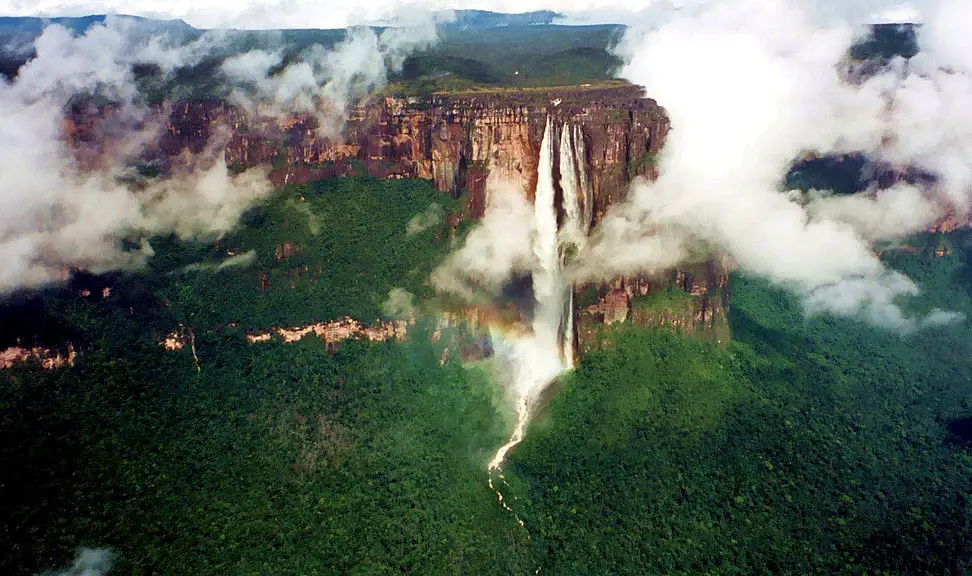
Wonders of Venezuela
Venezuela is famous for its primeval, vast natural areas with numerous impressive natural monuments: such as the plateaus with abrupt walls (tepui) and numerous very impressive waterfalls, including the world’s highest one – Angel Falls. Extremely high biodiversity is characteristic of the entire country.
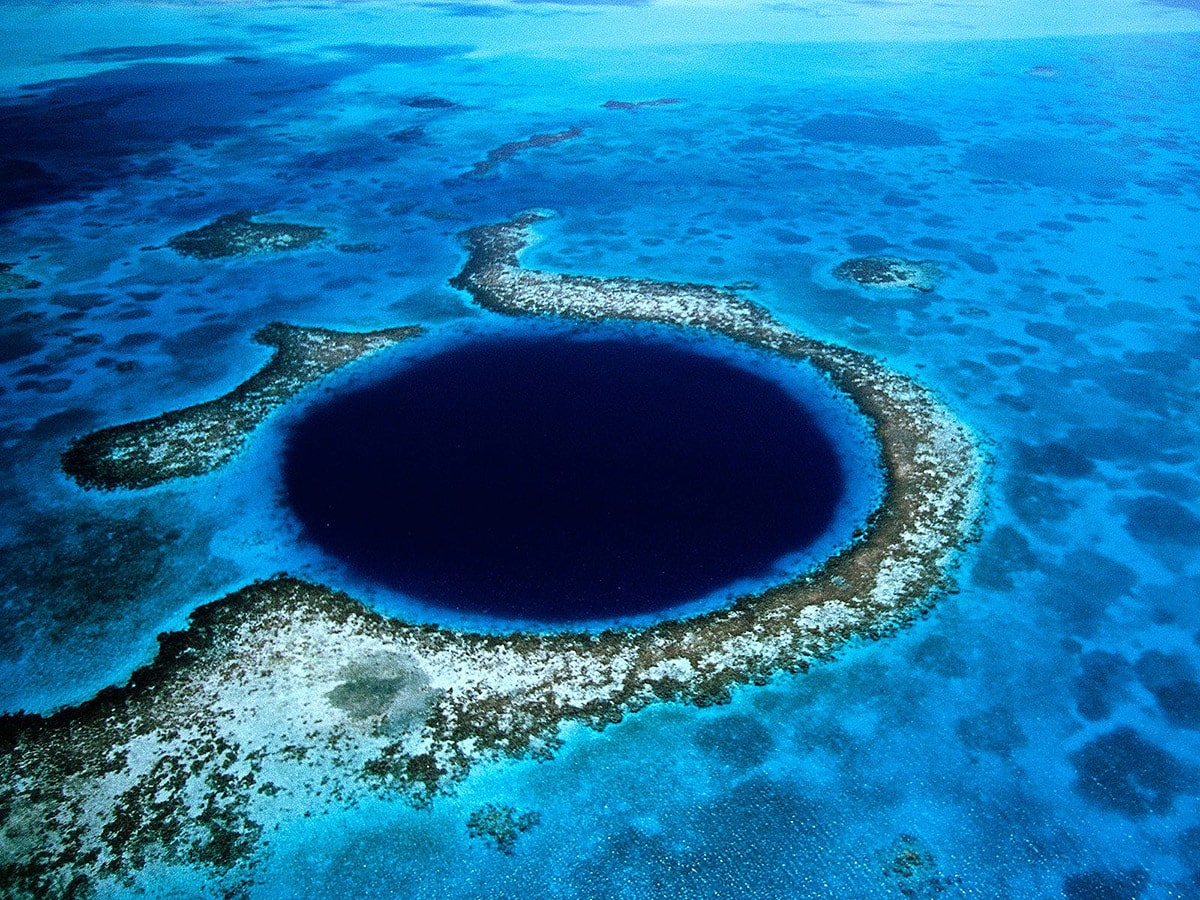
Sinkholes
This category includes outstanding sinkholes – large natural depressions or holes, which for most the part represent collapsed caves.
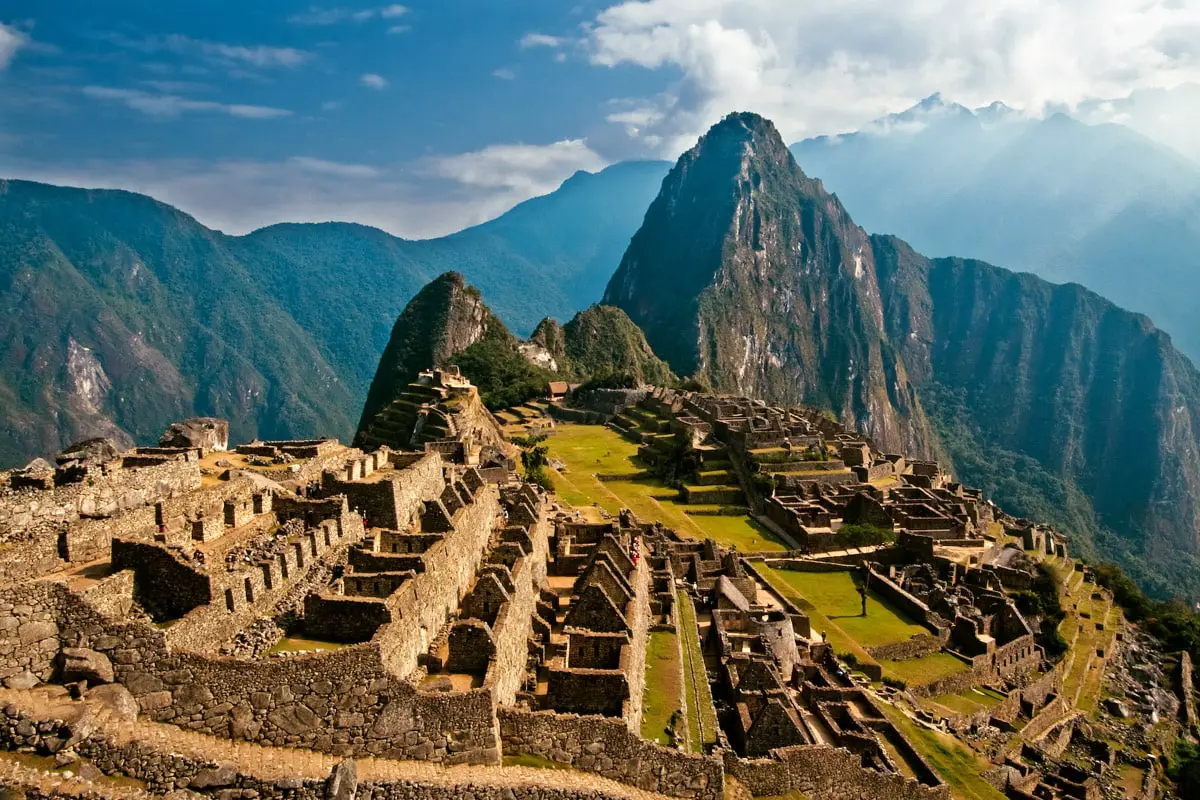
Wonders of South America
There is little doubt – South America is one of the most spectacular… maybe the most spectacular continent of the world.
There is located the second-highest mountain chain in the world, the largest rainforest, the tallest volcanoes, and the tallest and largest waterfalls. The highest biological diversity in the world is reached somewhere near the eastern ranges of the Andes in Ecuador, Peru, or Colombia.
 Recommended books
Recommended books
Tepui: The Last Expedition
In 1559, forty-nine Spaniards exploring a tributary of the Orinoco River reached a sheer-sided, cloud-capped mountain called Tepui Zupay. When they tried to climb it, all but six were slaughtered by Amazons. Or so claimed Friar Sylvestre, the expedition’s chronicler. But Sylvestre made many bizarre claims: rivers of blood, plants that lead to gold…
Auyan
A photographic journey in the 6th biggest national park in the world, Canaima National Park in Venezuela from the lens of Vanessa Flores.

